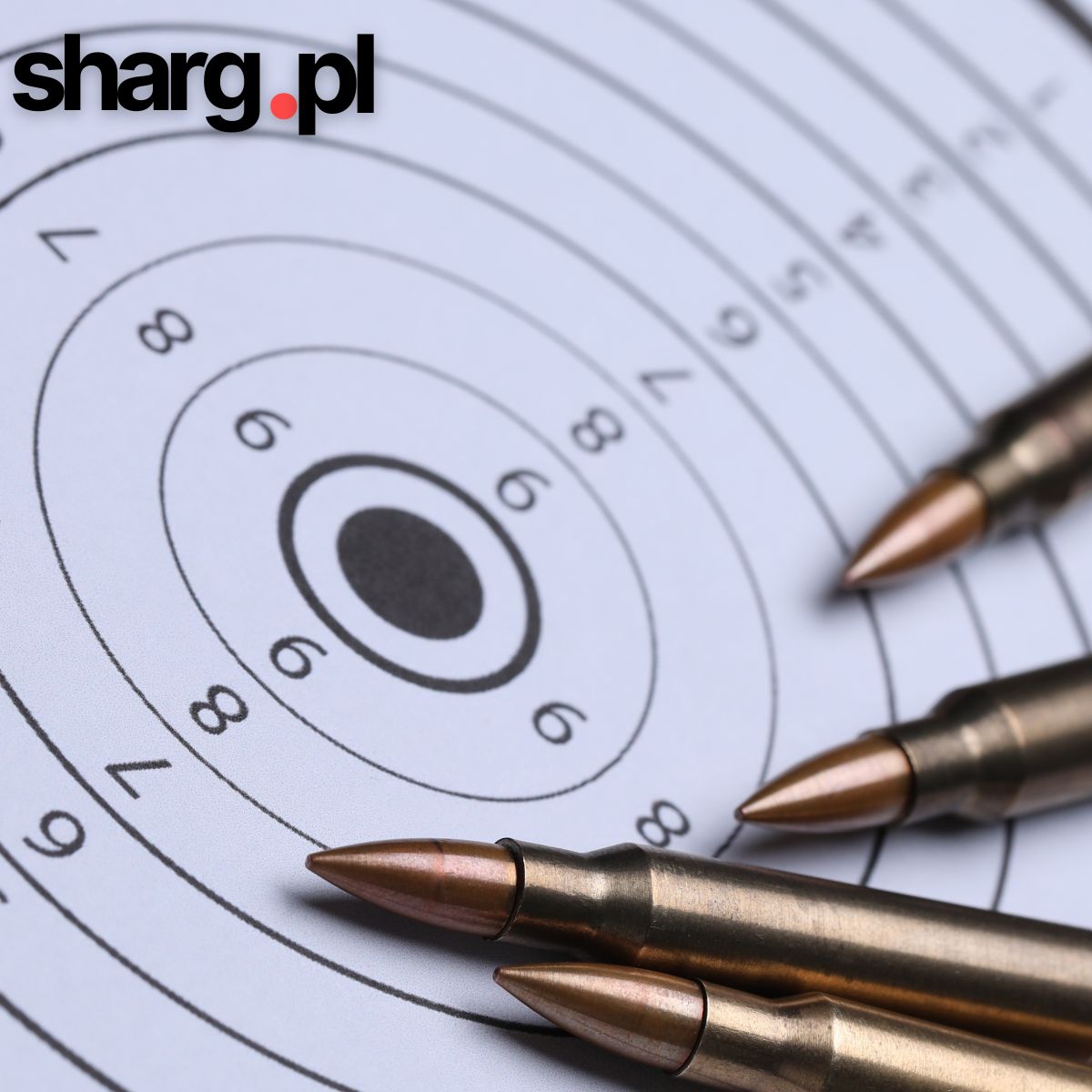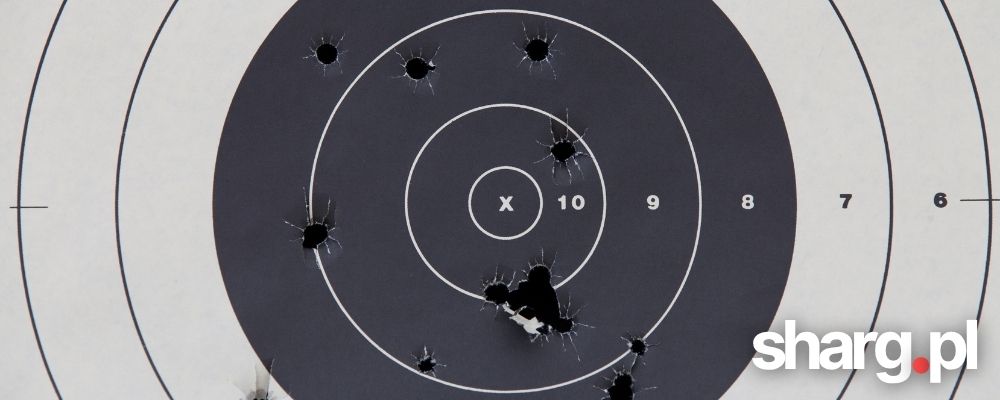
Firearm Accuracy: 10 Key Technical Factors (Excluding Shooter Skill)
Accuracy isn’t just about the shooter’s skill. The outcome is primarily determined by what happens inside and around the firearm: its design, condition, and settings. This article highlights the most critical technical factors affecting the accuracy of pistols, shotguns, spring-powered air rifles, PCP air rifles, and black powder firearms. We focus on elements you can control and improve.
Accuracy vs. Precision – A Brief Distinction
Accuracy is the ability to hit the intended point of aim. Precision is the consistency of hitting the same spot repeatedly. A firearm can be precise but inaccurate (grouping tightly but off-target) or accurate but imprecise (hitting the target but with wide spread). Ideally, both qualities are combined.
The most critical technical factor affecting accuracy is the quality and condition of the barrel – bore geometry, muzzle crown, and cleanliness determine projectile stabilization and shot consistency.
10 Universal Technical Factors Affecting Accuracy
1. Barrel Quality and Condition
The barrel stabilizes the projectile and ensures a consistent flight path. A damaged crown, worn rifling, or fouling immediately degrade grouping.
- Check: Muzzle crown, bore cleanliness, absence of corrosion, and no sharp burrs.
- Improve: Regular cleaning and maintenance; repair the crown or replace the barrel if damaged.
2. Ammunition/Pellet Compatibility with the Barrel
Not every cartridge or pellet performs the same in every firearm. Caliber, weight, and shape significantly affect grouping.
- Check: Test multiple ammunition/pellet types at the same distance and target.
- Improve: Select the series with the tightest grouping; for air rifles, test pellet size and hardness as well.
3. Energy Consistency (Propulsion)
Consistent muzzle velocity ensures a consistent point of impact. In PCP rifles, this is managed by the pressure regulator; in firearms, by consistent charges and powder; in spring-powered rifles, by the condition of the spring and seals.
- Check: Velocity spread (FPS/Vo) across multiple shots.
- Improve: Service the regulator or propulsion system; select ammunition with consistent quality.
4. Trigger Mechanics and Characteristics
A consistent, clean trigger minimizes unintended firearm movement at the critical moment. Excessive resistance or a noticeable “jerk” increases spread.
- Check: Free play, smoothness, and break point.
- Improve: Adjust according to the manual; replace worn components.
5. Bedding and Mounting
The barrel, action, and stock must operate consistently. Looseness or stresses can transmit vibrations and shift the point of impact.
- Check: Stock screws, stock rigidity, barrel-stock contact points, and optic mounting.
- Improve: Tighten with the correct torque; ensure stable mounting; consider professional bedding if needed.
6. Recoil and Vibrations (Barrel Harmonics)
The firearm’s reaction to firing affects the moment the projectile exits the barrel. In spring-powered rifles, the entire firing cycle is critical.
- Check: Consistency of firearm behavior post-shot; signs of barrel-stock contact.
- Improve: Dampen vibrations, ensure a stable grip and mount, and select appropriate ammunition or pellets.
7. Technical Condition and Wear
Erosion, corrosion, action looseness, worn seals, and springs reduce system consistency.
- Check: Visually inspect the barrel and chamber; check mechanism play; assess seal and spring condition.
- Improve: Replace consumable parts; conduct regular maintenance checks.
8. Sights and Their Mounting
Any looseness in iron sights or optic mounts causes a wandering point of aim.
- Check: Screw tightness, mount stability, and absence of shifts.
- Improve: Remount, replace damaged components, and tighten properly.
9. External Ballistic Conditions
Wind, temperature, humidity, and pressure become increasingly significant with distance. Light projectiles and pellets are particularly sensitive.
- Check: Wind and temperature forecasts; conditions at the range.
- Improve: Select ammunition/pellets suited to the distance and conditions; test at various ranges.
10. Black Powder Firearm Specifics
Consistent loading, correct powder charge, and bullet fit to the bore are critical here.
- Check: Powder measure accuracy, loading technique, bullet diameter, and material.
- Improve: Standardize the loading procedure; test different charges and components.
Differences Between Firearm Types – Key Factor Comparison
Pistol (Short Barrel)
Key Factors: Trigger mechanics, barrel quality, sight mounting.
Reason: A short barrel reduces wind influence but amplifies the importance of a clean trigger and rigid, consistent mounting.
Smoothbore Shotgun
Key Factors: Choke type, ammunition (shot) compatibility, barrel quality.
Reason: The goal is an even shot pattern—choke and ammunition choice significantly affect the hit pattern.
Spring-Powered Air Rifle
Key Factors: Firing cycle characteristics (vibrations), pellet compatibility, barrel quality.
Reason: The firing cycle is inherently dynamic; controlling vibrations and selecting the right pellet are critical for grouping.
PCP Air Rifle
Key Factors: Pressure stability (regulator), pellet compatibility, barrel quality.
Reason: A “clean” shot requires stable pressure and a pellet matched to the specific barrel.
Black Powder Firearm
Key Factors: Loading quality, bullet/pellet fit to the bore, barrel condition.
Reason: Energy and geometric consistency of loading components directly affect spread.
Quick Accuracy Checklist (5 Minutes)
Safety First: Before doing anything, ensure your firearm or air rifle is unloaded and secured according to safety protocols. Work only with an unloaded firearm.
- Assess barrel condition: cleanliness, absence of corrosion, and no muzzle crown damage.
- Check sight or optic mount stability; eliminate looseness.
- Test the trigger “dry”: ensure resistance and break point are consistent.
- Verify propulsion consistency: for PCP, compare velocities of multiple shots; for firearms, use ammunition from the same batch; for spring-powered rifles, assess spring and seal condition.
- Conduct quick ammunition/pellet tests: compare two or three batches at the same distance and select the one with the tightest grouping.
Common Mistakes That Ruin Accuracy
- Neglecting barrel cleaning and ignoring muzzle crown condition.
- Randomly selecting ammunition or pellets without comparative testing.
- Loose scope mounts, stock, or other fixtures.
- Ignoring velocity spread (failing to check the regulator or charge consistency).
How to Quickly Improve Results (Action Order)
- Check and eliminate looseness (sights, mounts, stock).
- Clean the barrel according to manufacturer guidelines.
- Test 2–3 types of ammunition/pellets and select the best performer.
- Verify propulsion consistency (PCP regulator, ammunition batches, spring condition).
- Conduct a short test shoot and record results to confirm improvement.
FAQ – Frequently Asked Questions About Firearm Accuracy
Does a longer barrel always mean better accuracy?
No. A longer barrel increases muzzle velocity but doesn’t always improve grouping. The key is ammunition compatibility and barrel quality. In some cases, an overly long barrel can generate more vibrations and reduce accuracy.
Why is barrel condition so critical for accuracy?
The barrel stabilizes the projectile through rifling and proper geometry. Damage, corrosion, or fouling causes the projectile to lose stability in flight, immediately resulting in wider shot spread.
Does different ammunition really affect accuracy?
Yes. Each barrel “prefers” certain cartridges or pellets. Even slight differences in shape, weight, or diameter can alter grouping by tens of percent. Testing ammunition is crucial for optimizing accuracy.
How do I check if a PCP regulator is working properly?
Fire a series of 5–10 shots through a chronograph and compare velocities. The spread should be minimal, ideally within a few FPS. Large variations indicate issues with the regulator or system seals.
What most affects accuracy in spring-powered air rifles?
The most common issues are erratic vibrations from the spring’s firing cycle and poorly matched pellets. Focus on stable grip, vibration damping, and systematic testing of pellets from different manufacturers.
How can I improve accuracy in black powder firearms?
The key is consistent loading: use the same powder charge, uniform packing, and a bullet perfectly matched to the bore. Any variation in these parameters directly affects grouping.
Does cleaning the barrel really make a difference?
Yes. Accumulated fouling and powder residue alter friction and destabilize the projectile’s path. Regular cleaning improves consistency and aids in diagnosing other accuracy issues.
Does a scope always improve accuracy?
A scope doesn’t inherently improve accuracy but makes precise aiming easier. The condition is stable mounting. A poorly mounted scope can reduce accuracy more than no scope at all.
What tests should I do to quickly assess firearm accuracy?
The simplest test is firing a 5–10 shot series at a target from a fixed distance, ideally in calm weather. Repeat with different ammunition or pellet batches. The results will show whether the issue lies with the firearm or ammunition selection.
What are the three most important things to improve accuracy?
Regardless of firearm type, the top priorities are: barrel condition, ammunition/pellet selection, and stable sight mounting. These are the three foundations to start any accuracy diagnosis.
This article is informational and focuses solely on the technical aspects of firearms. Always follow safety protocols and applicable regulations.
Want to improve your firearm’s accuracy? Check out accessories, parts, ammunition, and service support at Sharg.pl. Find solutions for pistols, shotguns, air rifles, and black powder firearms.

